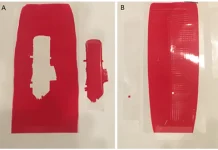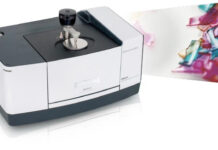By Alex Hoffer, chief revenue officer, Hoffer Plastics Corporation
Note from the Managing Editor: The plastics industry has been inundated with a wave of negative publicity, from pollution concerns to straw and bag bans. In October 2019, injection molder Alex Hoffer wrote this memo reminding consumers, brand owners and manufacturers that plastics are more than the latest news story.
Despite its contributions to innovation, the plastics industry has garnered increasing criticism for its environmental impact. So, why do we continue to use plastics in the first place?
The technical answer is that plastic has a high strength-to-weight ratio and can be easily shaped into a wide variety of forms that are impermeable to liquids and are highly resistant to physical and chemical degradation. These materials can be produced at a relatively low cost, making it easier for companies to sell, scale, save, etc. The primary challenge is that the proliferation of plastics in our everyday use, in combination with poor end-of-life waste management, has resulted in widespread plastic pollution.
However, consider that it is possible that the plastics industry is doing more good than harm, and that the environmental issues the industry faces have more to do with recycling than production.
Plastics and the environment
Austrian environmental consultancy Denkstatt recently conducted a study to determine the impact of farmers, retailers and consumers using recyclable products (wood, tins, glass bottles/jars and cardboard) to package their goods rather than plastic. What they found was that mass of packaging would increase by a whopping 3.6 times and would take more than double the energy to make, thereby increasing greenhouse gases by an astounding 2.7 times.
One proposal for replacing plastics with different materials is to replace plastic bags with paper ones in grocery stores. While this may sound like a more sustainable solution, the data do not support it. By volume, paper takes up more room in landfills and does not disintegrate as rapidly as plastic. Because of this, plastic bags leave half the carbon footprint of cotton and paper bags.
Plastics and food
Consider the properties of plastic that make it so attractive for food packaging: It is durable, flexible and it does not shatter; it can breathe (or not); and it is extremely lightweight. As a result, food and drink are protected from damage and preserved for lengths of time previously unimaginable.
The European Packaging and Film Association (PAFA) says that the average spoilage of food between harvest and table is 3% in the developed world, compared to 50% in developing countries where plastic pallets, crates, trays, film and bags are not as commonly available. This data point shows us that plastics play an integral role in the preservation of food. In a world where many go hungry, it is advantageous to continue to support an industry that helps to keep food on tables, families fed and reduces food waste.
Plastics and cars
Turning our attention to plastics’ relationship with the automotive industry, let’s start with safety. The National Highway Traffic Safety Administration estimates that today’s seat belts, which are made with industrial strength plastics, have the potential to reduce auto fatalities by as much as 45% and serious injury by 50%, compared to not being buckled in.
Also, car manufacturers rely on plastic to make lightweight materials that reduce the weight of automobiles so they can meet the Corporate Average Fuel Economy (CAFE) standard, which is set to be increased to 54.5 miles per gallon by 2025. I predict that the use of plastics to minimize the weight of cars will be an integral part of car manufacturers’ efforts to meet these new standards – ultimately increasing fuel efficiency and reducing the environmental footprint of vehicles.
Plastics and healthcare
Did you know that plastic materials increase the efficiency and hygiene of your physician’s office? Plastic syringes and tubing are disposable to reduce disease transmission. Plastic intravenous (IV) bags and tubing that store and deliver blood, fluid and medicine let healthcare workers more easily view dosages and replacement needs. Plastic heart valves and knee and hip joints save lives and make patients’ lives more comfortable. Plastic prostheses help amputees regain function and improve their quality of life.
Plastics and jobs
Consider a world in which the plastics industry in America suddenly came to an end. While there would be some that celebrate this, I imagine that the cheers from those who are “anti-plastic” would very quickly be overshadowed by the 989,000 individuals in the US who collect our paychecks and support our families thanks to job opportunities within the plastics industry.
In 2019, the argument to remove plastics from our way of life entirely is not a feasible option. Plastics’ contribution to the health of our environment, the safety and durability of our healthcare products, the fuel efficiency on our roads and the growth of the economy – and so much more – tells us that it is worth putting our best efforts toward understanding this debate further.
Alex Hoffer is the vice president of sales and operations at Hoffer Plastics Corporation, a leading global supplier of tight-tolerance, custom injection molded parts across markets including flexible and rigid packaging, automotive, appliances and consumer industrial. For more information, visit www.hofferplastics.com.






